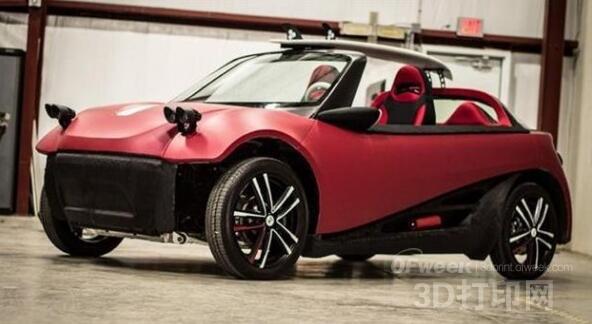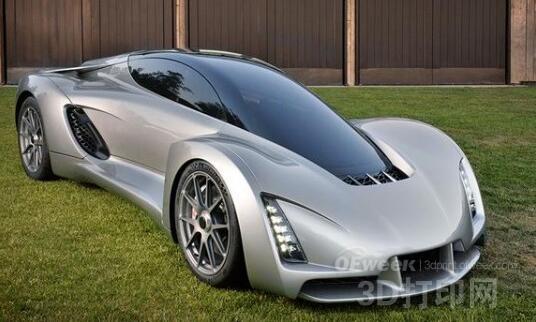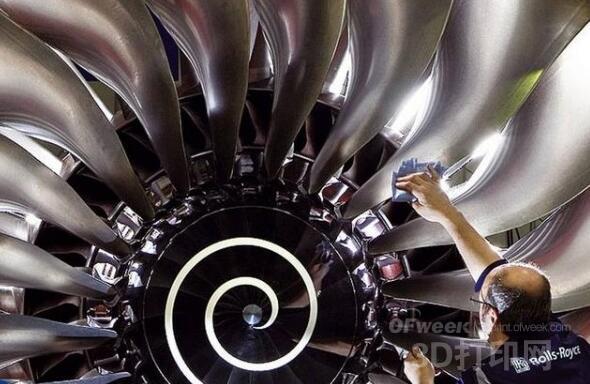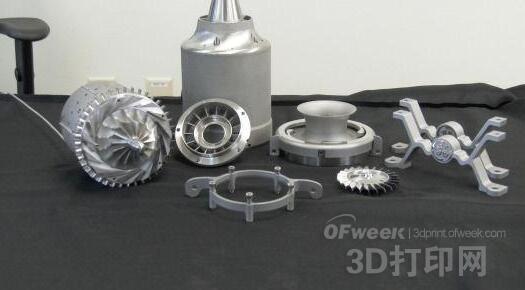In the current automotive field, the most advanced technology is undoubtedly unmanned, and in addition to driverless, new energy vehicles are also the future direction of the entire market. But to be honest, although these two directions seem to be very good, but there is still a long way to go if you want to be able to become universal or mature. In fact, in addition to electric vehicles and driverless technology, in the production and development of traditional cars, there are many other technologies that can be quickly applied or actually have full potential in the future.
For example, 3D printing is the most worthwhile new technology that many automakers or accessory companies pay attention to.
The application of 3D printing technology in the automotive field can bring many advantages. First, the manufacture of traditional automobiles and parts is a way to reduce materials, including the removal of materials (requires props and fixtures), and mass production requires molds. 3D printing is the opposite way, adding materials, it does not require tools and fixtures, and is very suitable for rapid production, especially for the development of some new models or small and medium-sized companies, 3D printing technology will almost no additional marginal cost. In addition, 3D printing can bring unparalleled advantages in the accuracy of the mold and the efficiency of the supply chain. At present, in the automotive field, many manufacturers and companies have begun to try 3D printing of parts and even the whole vehicle. If you are very interested in the application of 3D printing in the automotive field, you may wish to take a look with us.
The first 3D printed electric car
Local Motors, a US-based car design and development company, recently announced the successful development of the world's first 3D printed electric car, the LM3D Swim, which will be pre-sold next year for $53,000 (about 330,000 yuan). Local Motors plans to get highway approval and crash certification for future LM3D series cars.

At last year's Las Vegas modified car parts and accessories exhibition, Local Motors used a 44-hour on-site 3D printing of the Strati electric car. LM3D Swim is built using a direct digital manufacturing process that relies on the Open IO platform, and all future LM3D projects will be based on Open IO development.
Local Motors said that this community member submission design will enter the "concentration testing and development phase", the company plans to put into production in early 2017. The LM3D Swim is a surf-themed convertible that looks like a two-seater, with a fixed-door design, two-colour paint on the body, and a raised design. Local Motors has developed a thermoplastic body with Shaki Industries, which also integrates other technologies from companies such as Siemens and IBM to provide a safe and efficient driving experience.
Audi Metal 3D Print Reissue Racing
Although mainstream automakers are not yet fully utilizing the power of 3D printing, Audi seems to be very interested in this emerging technology, especially in the use of high-strength materials. Recently, Audi's tool manufacturing department used metal 3D printing technology to create a concept car.

Metal 3D printers are somewhat different from plastics throughout the process and require special additives, which means that multiple layers of printing are required to create the desired shape. At the same time, the metal can be broken down into very fine metal powder by laser. And the diameter of this powder is half the diameter of human hair, so this means that metal 3D printers can make very small and complex components. The main metals, including aluminum and steel, which make up the chassis of the car, can be done with a 3D printer.
This time Audi's 3D printing department is working hard to start testing with this technology and has created a 1:2 ratio car. Audi used metal 3D printing technology to create a half-size Auto Union Typ C, designed by Ferdinand Prosche, and won several Grand Prix races with a 16-cylinder engine in 19.3 and 1938.
This car is currently only a model and it is not possible to print full-size car components. However, the biggest advantage of 3D printing is that it can reduce the generation of waste and increase the cost of benefits, while also reducing the complexity of the parts manufacturers in modeling, thus accelerating the development and assembly process of the entire car.
The first 3D printing concept super run
In the summer, DM announced its concept of super-running DM Blade, the first 3D printing technology. It is a manned super sports car made by a 3D printer. Of course, not all components are made by 3D printers, but the overall skeleton of the body is made of 3D printed aluminum alloy blocks and carbon fiber tubes. The advantage is that the weight of the body is greatly reduced, and it is also more environmentally friendly. According to the introduction of the DM company, the strength of the Blade super-run is high enough to cope with the general collision.
DM first printed out an aluminum node structure called "Node" in 3D. After carefully creating the nodes with complex shapes using 3D printing, connect them together through ready-made carbon fiber tubing. When all the nodes were printed, several semi-skilled workers manually assembled the chassis for only 30 minutes before and after, while the chassis itself weighed only 61 pounds.

As a super-run, the performance of the DM Blade is unequivocal. The car is equipped with a 4-cylinder 700-horsepower dual-fuel engine that can be fueled with gasoline or compressed natural gas. It can accelerate from 0 in just 2.2 seconds. Up to 100 km / h.
3D printing replica hood retro sports car
Those who like to study sports cars must know the SHELBY COBRA, which was launched by Carroll Shelby in 1962 and is considered one of the greatest top 10 sports cars in 60 years. Today, with the development of high technology, SHELBY COBRA is not only one of the greatest sports cars, but also one of the few sports cars with many replicas and 3D printed versions.

The 3D printed SHELBY COBRA is a dedicated energy-saving electric motor that will be unveiled this week at the North American International Auto Show in Detroit. It looks almost identical to the real SHELBY COBRA. Most surprisingly, the entire SHELBY COBRA 3D printing project took only six weeks from conception, design, and printing to final completion.
Rolls Royce 3D Printing Aircraft Engine
In addition to the most well-known luxury cars, Rolls-Royce is also the world's leading aircraft engine manufacturer. And in November, Rolls-Royce successfully used the TrentXWB series of turbofan engines built on 3D printing technology on Airbus aircraft.

The latest TrentXWB-97 engine is designed for the Airbus A350-1000 and is expected to be operational in 2017. The engine development design started two years ago, and the first test flight this week was successful. In the future, TrentXWB-97 will replace Rolls-Royce Trent900 as the next-generation engine of Airbus. The success of this test flight is not only a milestone for XWB-97, but the use of 3D printing aircraft engine components is also a remarkable achievement in the industry.
Universal 3D printing micro jet engine
In May of this year, a team of engineers at American Electric Company announced that they had successfully printed a small jet engine using 3D printing technology. This is a genuine jet engine with a speed of 33,000 rpm. But instead of using an ordinary home 3D printer, they created a 3D printer that can use high-melting metal powder as a raw material. The printed jet engine will be used for remote-controlled aircraft, and the team of engineers said that commercial aircraft engines are too complex and are not currently available for 3D printing. The small jet engine that is printed is 8 inches tall and 1 foot long.

Since this 3D printing technology was built on the fusion of thin metal layers, no cutting technology was used, which wastes less material. Another major advantage is that complex parts can be printed more accurately. Currently, this mini jet engine is being demonstrated at GE Aviation but prior to this it has passed the test of the full-size engine test center.
The world's largest 3D printing drone
At this week's Dubai Air Show, Aurora Flight Sciences teamed up with Stratasys to showcase 3D printed jet high-speed drones at speeds of up to 241km/h. It is also the largest and most complex 3D printer drone currently available. Aurora Flight Sciences is responsible for design, while Stratasys is responsible for assembly. The drone has a wingspan of 3 meters, but weighs only 15 kilograms, and 80% of the fuselage is printed in 3D by fused deposition of FDM.

According to Dan Campbell of Aurora Flight Sciences, this product is also the largest, fastest and most complex drone currently produced in 3D printing. The two companies said their main goal was to clarify how fast it could be from designing to manufacturing a lightweight jet drone. Printing is the most time-consuming part of the fuselage, which takes up to 9 days. The rest of the machine, including wings, nozzles, fuel tanks and other small parts are also produced at the same time, taking hours from a few hours to a few days.
(Editor)
Wooden Gifts,Wooden Gift Box,Wooden Photo Blocks,Wooden Gift Items
CSL WOOD ART FACTORY , https://www.cslwoodart.com